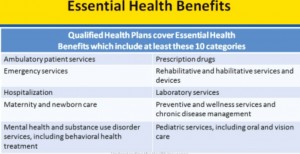View the Post on the Blog
View the Post on the Blog
Mark Berry looks back on the second day of a controversial CFS Advisory Committee Meeting
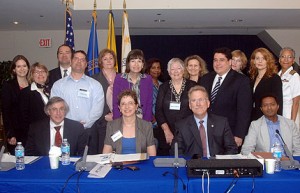
The CFS Advisory Committee (CFSAC) provides advice and recommendations to the Secretary of Health and Human Services (HHS), through the Assistant Secretary for Health, on issues related to myalgic encephalomyelitis and chronic fatigue syndrome (ME/CFS). The committee meets twice a year, and the Spring 2013 committee met on May 22-23 in Washington D.C. As usual, the meeting was streamed live over the internet, and video will be available on the CFSAC website in due course. The agenda for this meeting can be viewed here, and the roster of committee members is here.
Day One of the meeting was described here. This article describes Day Two of the meeting, which featured:
The exploration of the questions that arose towards the end of this CFSAC meeting has barely begun, and we will be reporting further on those issues in the very near future. Jennie Spotila has written up an excellent report card on the meeting, which does a fine job of focusing on a number of concerns about CFSAC that advocates are likely to want to address in the coming weeks and months. There is still much more to be said about this meeting and the issues that it raised, but for now I will simply try to summarize what was said, with apologies for any omissions or inaccuracies in the continued absence of video footage on the CFSAC site.
- An Agency Update from Susan Maier of the NIH, with questions from the committee, focusing on two topics: the 2012 research funding figures for ME/CFS, and the NIH’s evidence-based methodology workshop.
- Further information from Beth Collins Sharp of the AHRQ regarding the process for the evidence-based methodology workshop, which it will deliver under contract using its Evidence-Based Practice Center program (EPC).
- A ‘state-of-the-art’ presentation from Dr Anand Parekh about the new Health Insurance Marketplace – strongly recommended for all US patients.
- Public comment from Leigh Reynolds, Mary Ann Savia, Matina Nicholson, Joseph Lanson, Mary Dimmock, Rev Bernard F. Hillenbrand, Faith Newton, Lori Chapo-Kroger, Robert Miller, Jill McLaughlin, Lily Chu and Marcie Myers.
- A discussion led by physicians Susan Levine and Lisa Corbin, about their clinical experience with ME/CFS, to help kick off CFSAC’s new initiative to explore ways of getting more clinicians interested in treating ME/CFS patients.
- The second Question and Answer session of the meeting: another opportunity for the watching public to submit questions to the committee about the subjects discussed so far.
- Last, but by no means least, tensions flared up right at the end of the conference, with Eileen Holderman revealing that she and two other committee members had been threatened with expulsion from the committee and were consulting with lawyers.
Day Two Begins
Gailen Marshall began Day Two of the meeting by explaining how the watching public could submit questions to be asked of the panel during the meeting. Questions can be sent via email to anyone present at the meeting, who can then present them to the team. Marshall emphasized that questions should be presented separately, rather than covering two separate questions in one submission, and should only concern information presented on the day. This new ‘question and answer’ feature is a welcome innovation to increase public engagement, and presumably it will be continued in future – hopefully the community will be better prepared to take advantage of it next time round.
More Agency Updates
National Institutes of Health (NIH): Susan Maier
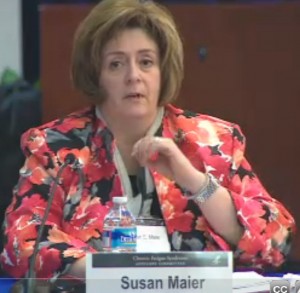
Susan Maier
Susan Maier introduced the NIH as ‘the nation’s research agency’, with over 80% of its budget being spent on funding research outside of the agency, and 10% on its own research.
2012 Funding for ME/CFS: The NIH’s research can be explored at http://report.nih.gov/. Within the RCDC process, ME/CFS research can be found under “CFS/ME”, and the summary of the 2012 funding is not an impressive one: a mere $4.52m was spent by the NIH on ME/CFS research in 2012 (and as Jennie Spotila has pointed out, you can subtract the best part of $1m from that figure if you exclude research unrelated to ME/CFS and psychological research). 6 new projects were funded, 10 were ‘non-competing renewals’, and 1 was a supplement (another form of continuation of existing project funding). Maier explained that all grant applications go through a scored review, and then a second review. They must fit within the budget for the category, and of course all budgets have had new constraints. Maier then claimed that in order to increase funds there needs to be an increase in good applications – not exactly a popular explanation for the underfunding situation amongst the researchers on the committee and the patients watching on. The next receipt date for applications is June 24. Even though RFAs have set-aside funds, not everything will be funded, Maier warned, and all applications still have to be reviewed. These issues around funding were to be the subject of some robust exchanges later in the meeting.
Evidence-based methodology workshop: The purpose of the NIH’s workshop, Maier explained, is to identify methodological and scientific weaknesses in the field in order to move the field forward, particularly with reference to some complex clinical issues. It is not a conference to develop a consensus definition of ME/CFS (the committee had requested this in a recent recommendation and this gap between what the committee had requested and what was being delivered was to become the focus of some intense debate, culminating in the meeting’s most controversial exchange towards the end of the day). The proposal to hold the methodology workshop was submitted by the trans-NIH working group, accepted and approved on Dec 11 2012, and ‘blessed’ as meeting the “timely, justified and needed” requirement at an organizational meeting on Feb 19 with NIH, FDA, ARC and OASH all represented. Names for the working group had been submitted, and the list included federal officials, experts, advocates, organizations and patients; they will now be contacted to check that they can attend, and meetings will begin in June or early July. The working group will then decide on the final questions that will be reviewed by AHRQ, after which the working group and AHRQ will work concurrently on the review.
Miscellaneous: Maier explained that the samples from Ian Lipkin’s XMRV study are now available for use by researchers, and NIAID has orchestrated the application process for that. Only one application has been received to date. She advertised a couple of events: the upcoming Pain Symposium, “Integrated self-management strategies in chronic pain” , and the Inter-agency pain research committee has a 1-day meeting on June 3, NIH campus; both are videocast and open to the public on the NIH campus in Bethesda. Finally, Maier drew the committee's attention to an ME/CFS funding opportunity for collaborative translational research under program announcement PAR-13-029, with a deadline of March 2014, to work with NIH researchers.
Questions:
Mary Ann Fletcher began the questioning of Susan Maier. How was the notification of the availability of the Lipkin samples circulated? A notice from the National Institute of Allergy and Infectious Diseases (NIAID) was posted in the NIH guide to grants and contacts, and an email update was sent out, Maier answered. (A later question clarified that the decisions on applications to access the samples would be made by scoring by NIH reviewers). How were the names for the methodology workshop working group selected, and how can we find out who they are? Maier explained that the names of 35-40 potential working group participants were put forward by the members of the organizational committee, which was made up of representatives of the federal agencies and the trans-NIH group. Fletcher wasn’t happy with the answer: she complained that we don’t have access to those names, and it seems to her that this is “not research in the sunshine” – the whole process takes place outside of the view of the research community.
Dane Cook wanted to know whether CFSAC would have any opportunity for representation? Maier answered that there were individuals present at the table whose names had been put forward. Cook also wondered what happened to RFA money if it isn’t all allocated to grants: where does that money go, and does that situation affect the chances of getting future RFAs? Ultimately, it’s spent on other research, Maier replied; it doesn’t go back to the treasury – and yes, this situation does negatively impact on the future possibility of an RFA on the same topic, although an RFA on a different topic for the same condition shouldn’t normally be affected.
SteveKrafchick asked if the evidence-based workshop was leading towards a case definition? It’s part of it, Maier said: the purpose of the workshop is to evaluate the existing research around multiple definitions, determine what types of patients can be differentiated, analyze how to use evidence to identify responders, and thus advance the research field in general. The work would ultimately result in an analysis of where the gaps in the evidence are, and conversely where evidence shows up strongly in meta-analysis. Krafchick wondered where the primer and the CCC fitted in? Each study examined will say which definition was used, Maier said, so that would all constitute evidence related to that definition. She reiterated that a single case definition is not the goal of the workshop; rather, it will assess the evidence related to all of the definitions and seek opportunities to examine the gaps in the evidence for each definition. They would find out what the difference is between them: which definitions worked for some interventions and not for others.
Kim McCleary had noticed that it seemed there was some more spending in 2012 related to XMRV that is not evident in the list of funding; how could that information be captured? Maier said that what she did was print out the information from each of the financial years 2009-2012, download the spreadsheets, and compile the results herself.
Eileen Holderman stressed that for her the case definition issue is critical; most definitions are outdated, not specific, and erroneous. Why then is the NIH looking at all of them in order to get a better one? Their work seemed to Holderman to have the same problem as the CDC’s multi-site study. Maier replied that the goal of the workshop is not to derive a new definition, it’s to figure out how the evidence shows up. For example, maybe some interventions have a more positive outcome for those with PEM; if so, the meta-analysis should reveal that.
Nancy Lee emphasized to the panel that it was a major success that the case for this workshop had been made successfully. Other conditions had been competing hard for this opportunity and ME/CFS had been successful. Roughly how much money would be spent on the workshop, Lee asked? Maier said she didn’t know, but she would ask - it would certainly be more than she makes, she joked.
The committee congratulated Susan Maier on her promotion to Deputy Director of the Office of Women’s Health.
Agency for Healthcare Research and Quality (HRQ): Beth A. Collins Sharp
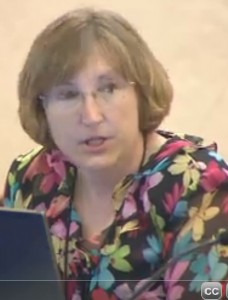
Beth A. Collins Sharp
Beth A. Collins Sharp spent most of her presentation explaining the process for the evidence-based methodology workshop, which AHRQ will be delivering. AHRQ runs no disease-specific programs, Collins Sharp explained; it provides data to others who make decisions. For example, it conducts systematic evidence reviews - like this evidence-based methodology workshop - in order to inform decisions. Its Evidence-Based Practice Center program (EPC) delivers an evidence review process with a state of the art methodology.
The first goal of this process, she said, is to get the research questions right: to do so, they work with patients and experts - that’s what they always do and they are very experienced in doing so. Collins Sharp referred to www.effectivehealthcare.ahrq.gov, www.consensus.nih.gov and www.prevention.nih.gov; the key question(s) will be posted there for public consumption. [See here for an example of the outputs of these systematic evidence reviews].
Once they have the key questions, they then develop a technical expert panel comprised of methodological, clinical, epidemiological and other experts, and they include both the clinician and patient view to advise on the research protocol. The terms and definitions to be used in the research will all be vetted by that panel, and the protocol will also be posted on the website. Then, the EPC goes ‘into the lab’ – and this part of the process is a ‘black box’ to the outside world. After they’ve finished that, there will be a peer review process on the draft, and other experts can be pulled in as they go along.
Within their research, they collate and evaluate the literature (which mostly, but not exclusively, means published literature). They don’t have to only review Randomized Control Trials (RCTs). They can carry out meta-analyses, but that’s rarely possible. They rate the quality and strength of the evidence, both individually and collectively. The takeaways from the entire process will be answers to the key questions: where there is strong evidence, and where there are gaps. They don’t make clinical or policy recommendations; instead, their outputs are used to inform the next steps. Their outputs are not the only evidence used to inform decisions, but their outputs are strong evidence and it’s where most people (within federal agencies especially) will start.
Collins Sharp had one other issue she wanted to highlight to the committee: AHRQ is now in the third edition of its guide on how to develop patient repositories. The CFIDS Association and PatientsLikeMe are both developing repositories, she noted; they should be talking to each other and looking at this guide. AHRQ also has a registry of registries.
Food and Drug Administration (FDA): Theresa Michele
Theresa Michele briefly reviewed the FDA’s two stakeholder meetings. Day 1 had been part of the FDA’s patient-focused drug initiative, which included work to get patient perspectives on drug development. The ME/CFS meeting was the first of 20 such meetings over the next 5 years, and it was the result of a lot of lobbying within the division to get this for ME/CFS. There had been a great turnout and the patients and patient groups had done a “tremendous job”. It had given the FDA a good idea on where to focus their outcomes and had been “incredibly productive”.
The discussion points for Day 2, the scientific workshop, were to review FDA tools for facilitating drug development; evaluate current treatments; take a look at research studies and their methodology, and review what has been most and least successful. Overall, the perspectives gained would inform pathways forward for drug treatments. Michele reminded the committee that the docket for the workshop is still open for comments until Aug 2 2013. The FDA are still reviewing all the content from that meeting. Summaries will be posted on the web; there will be a full transcript and short summary, plus a long summary of day 1 at least, plus slides. To find all the information, she suggested, just go to the FDA website and type in CFS.
Questions:
Lisa Corbin noted that the AHRQ sounded similar to the Cochrane Collaboration. Collins Sharp answered that the Cochrane Collaboration is an international non-profit; AHRQ is a federally-funded agency. Mary Ann Fletcher asked how long the review process would take, whether there were any examples of other similar processes, and whether they had ever resulted in a case definition? Collins Sharp said that AHRQ had completed over 200 EPC reports. The outcome of a systematic review, she said, depends on what questions are asked. It’s not typical to ask for case definition information, but sometimes issues of details about the case definition come up out of a review. Responding to a further question from the committee, Susan Maier replied that it was a good question to ask: why would they do something if it won’t result in a positive outcome? By way of an illustration of why the NIH were taking this approach, Maier described a recent review that had been conducted into Polycystic Ovary Syndrome, a condition in which, oddly, it turned out that it wasn’t essential to have polycystic ovaries to get a PCOS diagnosis. One outcome of that review had been to suggest that perhaps PCOS is not the right name for PCOS…
The New Health Insurance Marketplace
Dr Lee introduced Dr Anand Parekh’s presentation on Health Insurance by saying that it gave the ME/CFS community a chance to be “on the cutting edge of learning about these new opportunities”.
Anand Parekh M.D., M.P.H. is the Deputy Assistant Secretary for Health (Science and Medicine), U.S. Department of Health and Human Services – and a former Designated Federal Official on CFSAC. Today, he was attending CFSAC in order to let people know about the new health insurance marketplace, and the new opportunities that ME/CFS patients will have to get health insurance coverage.
The Marketplace starts on October 1st, at which point tax breaks and independent advice will be available. Qualified Health Plans must cover 10 essential benefits, they must be offered by a licenced insurer, they must offer different levels, and must charge same rate within the marketplace as they do outside it.
The presentation is not described here, but it is strongly recommended for ME/CFS patients in the US. To find out more about these new opportunities, view Dr Parekh’s presentation on the video of the CFSAC meeting when it is posted on the CFSAC site – and sign up at www.signup.healthcare.gov to get updates.
Public Comment
Leigh Reynolds
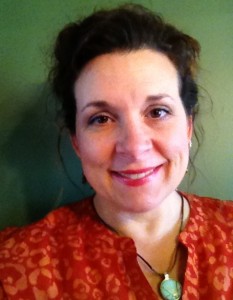
Leigh Reynolds
Leigh has recently joined the staff as patient engagement manager at the CFIDS Association of America. She said she was embarrassed to admit that despite two decades in patient advocacy, she knows little to nothing about ME/CFS. She felt “radically under-informed” about this condition, and said the state of her knowledge could be characterized as “That’s that thing where you’re tired, right?” In a few months since joining the CAA she has learned how under-informed she was. She feels angry, humble, and embarrassed to be representing the patient voice.
There are a few things that she does know so far, though. Patients, families and caregivers are smart, passionate, intelligent researchers; they have insights that you can’t get in a lab without their participation. It is “beholden on the committee to hear through their words to hear their hearts”, she said. “Please remember your service here is a privilege”. Progress is slow because of cumbersome machinery, she recognized, but “you are a voice for so many”. It’s also incumbent on patients and advocates to try to understand that complexity and assume positive intent, she added.
Clear communication is always a challenge and it is even harder with illness, said Leigh. We must all take the time to put patients at the center. So many are lost: unable to take action, unable to be here; for those who are here it is “a great sacrifice” to be here. We can’t get to better options without patient involvement, she said, and implored the committee to try to increase its engagement with patients. She suggested considering video testimony – set up a youtube channel – and the provision of more online survey options. Addressing patient groups, she said they must find a way to mobilize their constituents, and to focus on their strengths and what they have in common. “Our patients are our greatest asset: it’s time they were heard and placed at the centre of all we do.”
Dr Gisela Morales Roberto Barretto (Caregiver) on behalf of Mary Ann Savia
Mary Ann is from Boston. In January 2012 she traveled to Nevada to receive treatment from Dr Peterson, and returned in February to Boston, where (with her caregiver) they went through a “pilgrimage” and found that nothing could be offered to her. She wanted to make three key points about the information she obtained at the FDA stakeholders meeting (which she described as an ‘incredible opportunity’. 1) Ask the FDA to follow up on the meeting so that rules on approval of medicines and drugs can be less tight and things can move faster. Pharmaceutical companies need to be brought into play. No one drug will deal with all needs, but once the FDA approve one it will open the doors to others to get involved. If the FDA loosens up it will help everyone a lot. 2) There are some great people working on this, and she is a big believer in collaboration: she suggests there is a need to create a ‘thinktank’. 3) We need to expand wealth and create fellowship programs. Dr Barretto finishes by saying that she is a trained psychologist, and this is not a psychological condition, it’s a medical illness, so we need to find a way to create understanding of this and to encourage more research.
Matina Nicholson

Matina Nicholson
Matina thanked the FDA for the stakeholders meeting; she thought it was an excellent example of how to engage with advocates positively. Now she wants another one with more participation from pharmaceutical companies, and she wants other agencies (i.e. the NIH and the CDC) to follow the FDA’s example. She thanked CFSAC for introducing the new Question and Answer sections, and turned to her own choices of priority recommendations: 1) Fund research commensurate to the problem. ME/CFS research is “at the bottom of the barrel”; we need a different approach. 2) Pool resources to create centers of excellence. Matina has to travel hours to get to a doctor. Managed care, with a limit of 5 mins per person, is no good – and they don’t have the right information anyway. 3) There needs to be a Stakeholders Workshop on reaching a consensus on a research case definition. Fukuda isn’t working; the research it produces isn’t applicable. The group being studied is too heterogeneous; it’s vital to study subgroups. 4) Remove the CDC’s toolkit – Matina has heard the CDC is revising it, and that’s OK, but she implored the CDC to please use the physicians here at CFSAC and make sure their website content isn’t harming us; right now, we’re being harmed by the CDC. Matina finished by saying that, right now, she sees no hope for herself: we need to work through the red tape somehow. People have been suffering for 25 years; children and teenagers are suffering. She’s “beyond frustrated”, she know we have bright people here (at CFSAC) and she wishes we could find a way – “there has to be a way we can find that works better”.
Joseph Lanson
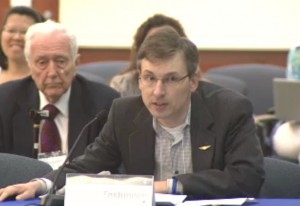
Joseph Lanson: “Researchers aren’t the only ones who need better outcome measures. Patients need to see results too”
Joseph has been ill for eight and a half years.He reviewed the CFSAC recommendations, and concluded there was only one he wanted to endorse today: the others are good, but they all depend on this one: an RFA for $7-10m to establish outcome measures. With no way to detect and measure the illness, all the other recommendations may be irrelevant. Joe produced his elephant puppet, Irrelevant, again – “Irrelevant in the room" - and wearily reminded the committee that "Irrelevant never forgets". He then challenged the CFSAC committee on its own outcome measures. “Researchers aren’t the only ones who need better outcome measures. Patients need to see results too”. As Jennie Spotila has pointed out, research funding has declined in the last year. With results like that, how could he encourage patients to attend CFSAC, let alone offer them the prospect of any help? Government has a choice, he finished: it can keep using vague measures to pay out disability benefits indefinitely, or it can fund research and get people back to work. He urged the NIH to “deploy the resources necessary for researchers to frame and study this illness properly”.
Mary Dimmock
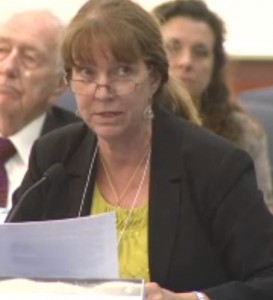
Mary Dimmock: "We are not going anywhere without fixing the Babel”
Mary thanked the FDA for creating the opportunity to create change. But she stressed that we are “not going anywhere without fixing the Babel” - the Babel of using the same label for diverse conditions. The CDC, on its website, says that the various definitions ‘identify similar pools of patients’, but that’s not true, and numerous studies have shown this. The heterogeneity, she said, is a ‘manufactured artifact’ of combining various conditions into “CFS”. Mary used to work for a pharmaceutical company and, with all due respect, this is “sloppy science”, she said, and patients have paid a high price for it in stigma and disbelief. Do we really need more study to accept PEM, she asked? We must stop this confusion, this babel, immediately. To that end, patients sent a letter to DHHS urging them to stop using CFS as a ‘one size fits all’ definition, adopt the CCC for now, as a case definition in order to get started - and then, get started on studying ME. It’s quite clear, said Mary, that the level of disease burden deserves more funding. “The disconnect between my sense of urgency for treatments…and their lack of focus and urgency…tells me that I’m alone. I’m stuck in my bed for the rest of my life.”
Rev Bernard F. Hillenbrand
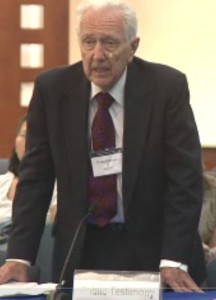
Rev Bernard F. Hillenbrand: “Keep dedicating yourself to this because we’re going to win it, it’s going to be a better day for all of us.”
Rev. Hillenbrand said he would stand to speak, as he always does, and he started by reminding the committee that he has now spent more than a quarter of a century living with his daughter (the author Laura Hillenbrand) suffering from ‘this miserable disease’, which affects not just the patient but all those around them. We have to remember, said Hillenbrand, that we have such a miserable history: it started with the ‘yuppie flu’ label, then ME/CFS was confused with AIDS and patients couldn’t get a dental appointment, then the scandal of the miniscule research funding being diverted to other purposes.
Remember too, he said, that it’s now over a quarter of century and you still can’t even say whether someone has, or doesn’t have, this disease. Thinking positively, though, Hillenbrand remembers when AIDS was assumed to be fatal, but now we can prolong life greatly, and with modern communications, ‘everyone’s working on it, and every day there’s some progress’. He thanks Kim McCleary as “the only person for many years who took this seriously and devoted her life to it”.
People often ask him how Laura is doing. She’s doing better, he says; her circumstances haven’t changed, but she has more hope, and so he thanks the committee members for CFSAC, and says to everyone: “Please have hope”. Hillenbrand remembers seeing his kids on an incubator; he remembers the death of Franklin D. Roosevelt FDR: there was a man, he said, who had confidence and faith, and that’s what we need. “Keep dedicating yourself to this because we’re going to win it, it’s going to be a better day for all of us.”
Faith Newton
Faith is Associate Professor of Education at Delaware. Her testimony highlighted a major challenge for children with CFS: achieving success at school. She has been providing input for the CDC website regarding children at school, and re-iterated the importance of that website giving practical info about pediatric CFS. She hopes for a pediatric factsheet on CFS, explaining to patients, parents and teachers how to work with it – and wants to see a pediatric case definition adapted as well.
Faith has drawn three conclusions from working with people struggling with pediatric CFS. 1) School is the area that concerns them the most. The impact of falling behind and the complications introduced by an invisible illness, that changes from day to day, make school life very difficult. The relationship between parents and teachers frequently becomes adversarial. 2) Solid research is needed on what helps children with CFS to succeed. We know that memory and processing speed are affected, and we know we need to tell teachers that multi-tasking is hard for CFS patients. We know also they are intelligent, and taking longer on some tasks doesn’t mean they’re stupid. 3) There’s a big disconnect between parents and schools. There are pockets of awareness, but amongst schools, ignorance is the norm. The CDC is taking a first step, but educators know nothing about this disease so they don’t know how to help.
Lori Chapo-Kroger
Lori is the President of Pandora. She reminds CFSAC of its recommendation to establish treatment centers - a recommendation which has still not been fulfilled. In Alabama, she met with doctors with an interest in establishing an ME/CFS and Lyme clinic, but hit obstacles: there was a misconception that most ME/CFS patients are on Medicaid; case evaluation is time-consuming so the clinic did not seem to be financially viable; and as a result, caring for ME/CFS patients was seen as unattractive because it doesn’t pay as well. Pandora’s survey has shown that in fact most care for patients is private healthcare, so that issue of cost and pay is a big obstacle. As a result, some doctors who do treat patients keep quiet about it, because if word gets out it could bankrupt them as patients flock to that clinic.
Healthcare in the US is an industry and clinics are businesses, Lori stressed – and care for ME/CFS patients is a losing business. So she asked CFSAC to recommend the creation of a DHHS taskforce, including experts and patient representatives, to come up with a unique business plan for a financially viable center for neuro-endocrine-immune diseases (NEIDs).
Another issue that concerned Lori: the research field is tainted by unvalidated claims of recovery and treatment results. Credibility is a big problem for ME/CFS practitioners; anyone practicing medicine and offering non-approved treatments tends to be considered a quack and unscientific. ME/CFS patients are the ‘proverbial hot potato’ she said. We should establish a medical specialty for these NEIDs. Where or how, we don’t know – but we bet you do, she told the committee. Finally, she invited listeners to email her at Pandora, at info@pandoraorg.net.
Robert Miller
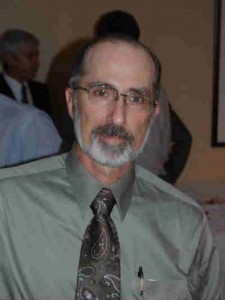
Robert Miller: "We can’t wait another two years, and there’s no reason to."
Robert warned that he was in the middle of an Ampligen infusion at the time the call arrived for his testimony, but he pressed on. He said this was the first CFSAC meeting he’s missed in some time but he’s had a ‘taxing’ year [perhaps an understatement, with a hunger strike and a sponsored sky dive among Bob’s recent campaigning activities!]. Bob expressed his appreciation to Janet Woodcock for the FDA workshop; he said it “may be the most productive federal meeting I’ve attended to date” and hoped the committee members would view the webcast. “Let’s make today a new day” said Bob, and “build off the momentum” from both the FDA and the CDC’s 7-site study. Bob hoped that we can work together, we can collaborate; “we patients need your help and you need ours”.
But he also stressed that there continues to be a crisis, which has no approved treatments, and the government still needs to take action. He expressed his concern over the request for supporting evidence for the committee’s recommendations, and the confusion over that new requirement. We can’t be required to ‘start from scratch’, said Bob. At the same time, there’s more than enough evidence available, so we would just have to set out the recommendations and backup and put it through.
Bob thought the arguments and excuses about funding for research are not justified: Alzheimer’s Disease, he said, overcame these obstacles. This committee, he advised, need to “push back on their superiors. We can’t wait another two years, and there’s no reason to. This committee is made up of experts who’ve sat there for two decades”. There’s enough science to diagnose and treat ME/CFS, Bob said; the committee needs to bring in all the top researchers and clinicians – not just one or two - hammer out a protocol. Call on them all, not just one or two. “It’s about quality of life”, he said, and like other speakers he stressed that bio-markers do exist: NK cells, viral load, cognitive function tests similar to Alzheimer’s Disease. “Treatments and tests are out there: we just need to get the experts in the room at the same time, just as the FDA did”.
Jill McLaughlin
Jill has been involved in ME advocacy for 15 years, and has worked with many groups. Her presentation focused on the ongoing issue of terminology. ME patients are stakeholders too, she said, and they don’t want to be called “CFS” or “ME/CFS”. CFS groups, she argued, use “ME” to make their disease sound more serious, and they have no right to. ME is a testable diagnosis of inclusion, she claimed, whereas CFS is a diagnosis of exclusion, and they are not the same. The CCC is not an ME criteria; the ICC authors have called for the ME-ICC to be used, with the objective of splitting ME from CFS, based on scientific consensus, she said. The CDC study won’t clarify the problem, she believes, because the 7 sites in the study are mainly from CFS clinics. It shouldn’t be up to a narrow select group to decide how this should work, and the proposal to use the CCC would continue to mean that “ME” studies may be conducted which contain no ME patients.
Dr Lily Chu
Lily was invited to attend the FDA meeting last month. She created a patient’s survey with the help of Leonard Jason. The respondents, she reported, were 85% female, almost all were white, with an average age of 51, and the average time they had been ill was 18 years. The most commonly listed symptoms included fatigue, PEM, pain, and cognitive problems. More than half had gastrointestinal problems and sensitivities. Almost all of the respondents were not improving over time.
The survey highlighted five tests in particular: natural killer cells, cardio-pulmonary exercise testing, brain imaging, tilt table, [and one other I missed!]. More than half of the respondents had never had any of these tests, but most of those who had showed abnormal results. These findings contradict the idea that patients have no abnormal test results. Significant Orthostatic Intolerance, Lily said, can be diagnosed by tilt table test, and that’s just one example.
Only 13% of the patients in the survey were employed, and 60% were bedridden on their worst days; 75% were housebound at their best. Lily called for proper care of bedbound patients: they need regular turning to avoid bed sores, and elevation of the bed head. Recommendations would not be enough to help, she warned; patients need practical support.
When asked how well their current treatments worked, survey respondents highlighted several helpful treatments: balancing rest and activity, sleep and other medications: the full survey lists the medications patients found helpful. Exercise programs, though, were found to have worsened patients’ health – they were worse than anything else. The full report would be sent to the FDA on the pending docket for the FDA’s Stakeholder Meeting.
How to get more clinicians involved in ME/CFS?
After a break for lunch, to help kick off CFSAC’s new initiative to explore ways of getting more clinicians interested in treating ME/CFS patients, physicians Susan M. Levine, M.D. and Lisa W. Corbin, M.D., FACP now led a discussion of their own clinical experiences treating CFS patients, and how and why they got started doing so. The discussion started in the form of a question and answer session between the two.
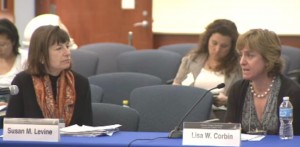
Drs Levine and Corbin compare notes
Levine began by asking Corbin: How did you get started, and what do you do?
Corbin said that most of her patients come to her by seeking her out, either as a physician known to treat their condition, or by seeking specific alternatives to FDA-approved treatments. She doesn’t only treat CFS/ME, she said, and she listed a range of alternative therapies offered by her clinic. She admitted that the alternative therapy scene does include a lot of people out there who are preying on patients, and stressed that she is always mindful of the practical considerations of time and money, as well as the evidence for safety and plausibility of therapies, before recommending treatments to an individual patient. She said she had seen lots of Fibromyalgia patients since the beginning of her practice, and her clinic became the official local referral clinic for Fibromyalgia in 2003, succeeding Jim Jones, whose lectures had impressed her. She has two cousins with CFS.
Levine described her own experience. After graduating from medical school she worked with Charlotte Cunningham-Rundles, and moved with her to the Mount Sinai Hospital. She was a co-author of the 1984 case definition. They found that they were seeing lots of patients, doing all the lab tests on NK cells etc, but then had nowhere for those patients to go, so she opened up a practice. At the time she had been researching the Autonomic Nervous System (ANS). She said she basically ‘fell into it and really enjoyed it’.
The next question they considered: How many patients do you see per week, and are there any particular challenges?
Corbin said that each week she actually only saw 0-2 patients with what she would call ‘true’ CFS, out of 10-20 overall, and said that she saw PEM as the ‘tipping point’. She saw at least as many patients with chronic fatigue that is not CFS. Caring for patients, she said, requires input from many clinicians and the help of specialists. She is starting to acquire a team of specialists to whom she refers patients to help with this: she has help from an immunologist (delivering IVIG), an electrophysiologist, an endocrinologist to ensure those issues are ruled out, a rheumatologist, an expert in infectious diseases, a sleep specialist (relevant where a true sleep problem exists), and an exercise physiologist.
Corbin's initial appointment with a patient usually lasts for one hour, but that’s rarely enough on its own. She finds patient records very helpful and goes through them in detail, usually before or after meeting the patient. Patient understanding of CFS varies greatly, she has found, so it’s important to ‘start them and their families on the right path’. Often she gives them a copy of the primer, which has been helpful to her for educating family members and friends. Actually, she finds that the CDC site has been helpful there too; despite its flaws, she has found it has been helpful in backing up the ‘legitimacy’ of the illness, and she thinks people are now starting to notice CFS more because the CDC has begun to legitimize the illness in the eyes of other doctors.
Levine said she was initially seeing 25% AIDS patients as well as CFS patients, and eventually solely patients with ‘chronic fatigue’. She raised a major question she is facing in her practice: whether to also take care of concomitant medical issues like diabetes, or to leave those issues to the patient’s primary care physician. In a typical week, she sees 45-50 CFS patients, and another 20 over the phone. She spends a lot of time on disability paperwork, and highlighted the need for extra documentation above what would be normal for other conditions. She typically gives her patients a fatigue scale questionnaire to complete once every couple of months, to help her keep track of their progress efficiently. 75% of her patients are on disability.
What did the two think were the main primary care issues?
In order to preserve the legitimacy of their practice, Levine felt it was necessary to do other things (primary care) as well. There was considerable discussion at this point about the question of the separation of primary care. Often, patients begged them to function as their primary care physician as well, because their regular physician would not give proper primary care for other issues because of their CFS diagnosis. In this situation, Levine would generally try to at least write to the patient’s primary care physician. She also noted that it was good to be involved in research as well: patients like that, she said, perhaps because it suggests that you want to do more to help them if you can. Her practice provided bulletins and factsheets. She emphasized the importance of learning from patients; they tend to know a lot more about the latest studies, she said, and she loved being brought new hot articles and information.
Corbin stated her philosophy regarding ‘anecdotal medicine’: “Although we’re told all the time not to practice anecdotal medicine, in a disease where there’s no FDA-approved treatment, I think anecdotal medicine is the way to go.”
The discussion gradually broadened to include the rest of the committee, addressing the questions raised by the conversation between Levine and Corbin and gradually moving towards the question of how to reach the ‘uninitiated’. Just having the information out there is not enough to educate physicians, it was felt; more pro-active measures are called for. One idea would be to identify people from the CFSAC group to disseminate information at physicians’ conferences. Many physicians used the UpToDate site, it was noted; its content on CFS is ‘not bad’ – not as in-depth as we’d like but as a starting point, not bad – and perhaps the committee could work on feeding sources like that with good content.
Chair Gailen Marshall gave some of his own thoughts during the discussion, talking particularly about his own work with Multiple Chemical Sensitivity (a term he tends to avoid because of the associations with psychological issues in the literature). Other committee members also spoke about their own clinical experience and focus.
Jordan Dimitrakoff described his own background; he had trained in Bulgaria and came to ME/CFS via his work with chronic pain. He highlighted the key problem that medical students learn nothing about ME/CFS in their courses, and read out a shocking section from a medical course book. That’s where physicians typically go for information, he said, not to the CDC website, so this would be a great place to start. Marshall raised the question of how to disseminate the primer more widely.
Eileen Holderman noted the frequent use of the words ‘chronic fatigue’ in the previous discussion, and confidently predicted that the use by committee members of those words to describe the disease was going to cause a lot of offense; it would be “all over the blogs after the meeting” she said, and explained why this was such a sensitive issue. Lisa Corbin explained that when she had used those words, she had done so deliberately and accurately, because most of her referrals just have Chronic Fatigue, not CFS, and she makes a clear distinction between the two.
Mary Ann Fletcher again mentioned the recommendation to the CDC to replace their toolkit with the primer. She said that she had actually done research on the inclusion of CBT and GET as treatments for HIV, and had found that they’re very good; they don’t cure, but they can help patients cope with disease. But to suggest that those are actually treatments that affect the central biological mechanisms in ME/CFS patients is just wrong, she said; they really don’t do that, and the exercise in particular can be very harmful to ME/CFS patients if it’s not done in the right way.
Public Q&A
After a short break, the meeting moved on to the second opportunity of the meeting for the watching public to submit questions to the committee – but first, there was one more public testimony to fit in…
Marcie Myers
Marcie was diagnosed in 1994, and had to quit her job in 1999. She lives alone but gets social security. Her concern is that there are a million ME/CFS patients in the US, and only 60 doctors, none of whom accept insurance. She has been working to try to get this problem resolved. She has been speaking with the head of her local teaching hospital at Georgia University, Dr Aziz. She tried to get her doctor to read the primer and gave him a copy of it, but he didn’t read it. She had sent primers to specialists in all kinds of specialties; they all said the illness didn’t fit in any of them, so her next goal is to get one of those specialisms involved in ME/CFS. She was now speaking to cancer people. She’s still trying to get ME/CFS included in the curriculum for students. She said there are loads of ME/CFS organizations but she finds it very hard to keep up with them all: she proposes there should be one site that lists everything: research info, information about MDs, events, etc. Summing up, she said that her two main points were the importance of educating teaching hospitals, and the provision of one site listing everything that’s going on.
Whose job is it to diagnose ME/CFS? Which medical specialty is responsible?
Susan Levine said she was trying to get primary care physicians to take responsibility, but also thought Allergy and Immunology and Infectious Diseases were relevant disciplines. Krafchick said that, in reality, this is mainly the job of the primary care physician, but their problem then was in finding any expertise when it came to referring people on. Fibromyalgia and CFS, he said, tend to involve the Autonomic Nervous System (ANS), there is something going wrong in the brain, hormones and cytokines – this was something there isn’t really a paradigm for. Dimitrakoff seconded what Krafchick said, and added that any trained physician should be able to make the diagnosis.
What is necessary for NIH to fund research at a level that finds a cure?
Susan Maier recognized that the questioner’s daughter has CFS and that she was frustrated and angry. Why was there so little funding? The only answer she had was this: the money that is spent comes from the number of grants that are funded. She couldn’t explain it any more simply than that. She said she was now begging the community: find the people who will submit grants to NIH. “I am begging you: please: send in applications”.
Ken Friedman challenged Maier’s answer. It’s not just who submits the grants, he said, but who reviews them, and what their prejudices are. OK, he admitted, times have changed somewhat, but his experience had been that his grants were reviewed by people who didn’t know CFS, and he got rejections because his applications didn’t meet the (unpublished) criteria for success. That history was part of why NIH doesn’t get many grant applications these days. Also, he said, there is major institutional prejudice against CFS research. This, he thought, was one of the elephants in the room: CFS researchers, said Friedman, are targeted for removal from their institutions. He had received no response to his testimony about that, and since then at least one more individual researching CFS, to his knowledge, had been removed from an academic institution.
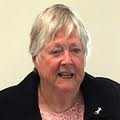
Mary Ann Fletcher: A 6% funding raite seems like "awfully low odds"
Fletcher described how she and two other researchers had been to an NIH presentation and had been told the ‘field was not yet ready’ for what they were presenting on. Last fall she had sent in an application, together with Nancy Klimas, and one reviewer didn’t like it, one did. She didn’t know of a better-recognized person in the field than Klimas to do the study. She was writing another application right now, and she sends one in practically every time, but the NIH, she said, only funds about one proper new study every go-round. She had been told the funding rate was about 6%, which seemed awfully low odds to her. She said she kept hearing the same kind of response from the NIH, and felt that it was just not being heard that the researchers are submitting applications.
What would be the cost of an NIH-funded Ampligen study? Would that be a better use of money than the workshops?
Nobody had an answer on that, but there was confidence that the workshop cost would be much less than funding studies, and someone will ‘get back to her’ on that question. Maier explained that the key reason why an Ampligen study had not been funded was that Ampligen is patented by Hemispherx, and this absolutely prevents federal agencies from funding studies into it. Everything depended on how Hemispherx moves forward in relation to its intellectual property rights: nobody else can use it in a clinical trial unless Hemispherx ‘gives it up’.
Can any specialty physician be converted to treating CFS?
Yes, said Levine, and the departments where this is working well tend to be integrative; but basically it works wherever you find somebody that has an interest. It can happen within any specialty, but it takes someone who has a passion. Dimitrakoff agreed that it’s a disease which does require an integrated approach.
Will Medigap also be included for Under-65s at reasonable cost?
That’s a really good question, said Alaine Perry, and she will look into it.
Krafchick noted that, at present, after 12 or 24 months everyone’s eligible for medicare, and he doesn’t know how the new act will affect that.
(Addressed to Levine and Corbin) What proportion of your patients get Ampligen, IVIG or other immune modulators?
Levine said she had used Ampligen in the past, but now she can’t afford it. Her patients are normally treated with antivirals. She uses IVIG rarely: it’s expensive, and there’s a proven lack of efficacy except in certain circumstances.
Corbin said she uses the treatments mentioned in a very low proportion of her patients. The only one she’s used with a few patients is prednisone.
Controversy erupts during final committee discussion
Gailen Marshall began the meeting’s final session by pointing out that there was just an hour and a half of the meeting left, and the committee still needed to discuss and approve the prioritized list, approve the criteria for the list of websites, and determine the workgroup assignments.
Eileen Holderman quickly made a request that she also be allowed to deliver her report on the work of her subcommittee, which she had been waiting to deliver for over a year. Marshall firmly said that this would only be possible if there was time after the meeting’s other business had been completed. Even after this exchange, there was little warning of the fireworks and revelations that were to come later as Holderman’s frustration mounted during the traditional ‘race against time’ at the end of the meeting to conclude the committee’s business.
List of ME/CFS websites to post on womenshealth.gov
Marshall proposed to deal first with what seemed a simple matter that could be dealt with quickly: the approval of the criteria for the websites to be posted on womenshealth.gov. But this was not entirely a straightforward issue, even now (after the question had been postponed from the previous day). Dane Cook pointed out that the list of criteria did state that CFSAC needed consent from the website owners – and since this had apparently not been obtained, the committee would need that consent unless they modified the criteria to remove that clause. Marshall said that the first group of websites that had already been approved had already met those criteria, but confirmed that they hadn’t been contacted.
An amendment was passed to remove the criterion that websites must indicate their agreement to their site being listed, and the criteria were then approved. The additions to the list had already been approved, subject to confirmation that they meet the approved criteria [which as far as this writer can see, some of them do not].
Prioritized list of recommendations
Marshall referred to the minutes from the 2012 meeting and again reviewed the background to this issue. Nancy Klimas had originally proposed putting this issue of the prioritized recommendations list in to the subcommittees, in order to review them in time to get the list to the DHHS in a timely fashion. Each of the subcommittees had proposed a priority list – again Marshall emphasized that the list was in no specific order, it was just a group of high priority recommendations. The procedural error was the failure to bring the list back for a full CFSAC vote before then posting it on the CFSAC website. The concern of advocates about that failing was ‘appropriately expressed’, said Marshall. The goal of all this, Marshall stressed, had always been ‘to simplify the recommendations, not to leave any out’. Marshall proposed adding to the list the five pending recommendations that haven’t been acted upon yet, which have been made since the original consolidated list was compiled.
Fletcher moved (with Levine seconding) to accept the prioritized list with additions. But Holderman had spotted a problem: the list her committee had submitted identified 9 recommendations, the one before the committee now had just 7. Fletcher amended her motion to accept the addition of the other 2, meaning that with the 5 recommendations passed since the lists were agreed, the list now had 14 recommendations. Fletcher agreed to Gailen’s proposal to list the recommendations by date, so that there was no appearance that they were a list in order of priority, and the motion was passed with no votes against.
Next, the committee briefly discussed the criteria for adding new recommendations to the list and removing old ones. Marshall said he is assuming that any recommendations the committee makes in future will automatically be ‘high priority’. The meeting unanimously agreed to add and remove further recommendations at CFSAC meetings: addition would happen automatically; removal from the list would require a majority vote in a regularly scheduled meeting.
[This appeared to bring to an end the questions around the controversial ‘prioritized list’ – but the issue is not that simple. Despite advocates’ representations, the prioritized list was not transparently available to the public while this discussion was taking place and there was therefore no opportunity for public questions and comments about the contents of the prioritized list itself. There will be further questions to be explored regarding the changes of wording made to past recommendations during the process of rationalizing the list, and questions about any recommendations that have been ‘dropped’ from the list.
This will be an issue that advocates will want to scrutinize closely – as and when the new ‘prioritized list’ is published and the community can see what it actually contains, and compare it with past recommendations. It is to be hoped that the timeframe of publication of the list will make it feasible for this to happen; there is a lot to be looked at here and the community will want to have time to scrutinize the list and react to what has happened – and it is also to be hoped that CFSAC will welcome this ‘crowd-sourced’ work and make the most of it. If there is serious controversy over the contents of the prioritized list, the picture will look rather darker…and the storm which was still to erupt in the last hour of the meeting seems to suggest this may well be the case…]
'Fireworks'
With the main business of the meeting concluded, the committee discussion suddenly and surprisingly became more fractious. The issues that were to emerge during the closing minutes of the meeting may perhaps have simply been the result of the pressure and hard work of the committee over the few days – but there were hints too that behind the relatively calm appearance of the proceedings, there may have been considerable tensions and arguments off stage…
The following fireworks are well summarized here, on Jennifer Spotila’s blog, OccupyCFS. What follows below is based on my own notes at the time, with help from Jennie’s notes also; I can’t vouch that it is complete or accurate but it’s my best attempt in the absence of video footage to refer to…
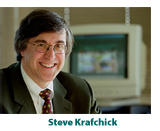
Steven Krafchick continued with the discussion of how recommendations should be dealt with: in particular, how would the committee now deal with HHS responses to recommendations? He focused again on the contentious issue of the recommendation of the committee that there should be a workshop to establish a consensus on what definition to use for ME/CFS, starting from the CCC. Krafchick wanted to know why the NIH had decided to do something quite different.
Susan Maier explained that they had decided to run this workshop quite a while ago. When she and her officials had described to NIH management the state of the field of ME/CFS research, given them the State of the Knowledge report, and said that this is where we are and we need to move forward, the recommendation of NIH management had been to hold this evidence-based methodology workshop. Krafchick re-iterated that the purpose of CFSAC’s recommendation had been to get from multiple definitions to one definition, right now, while we’re waiting for all that evidence. He didn’t see why that simple decision was a problem – it would cost nothing to use the CCC in the interim.
At this point there was something of a fracas: Gailen Marshall admonished Mary Ann Fletcher for interrupting Nancy Lee, and reminded her of the 3-minute rule and his emphasis at the start of the meeting on the importance of letting people finish. Holderman was also admonished for interrupting. Nancy continued her explanation of why this step of gathering evidence was seen as a pre-requisite to making any change to the definition [a line of argument which seems to cast back into doubt the issue of whether the current evidence-gathering activities are a response to the committee’s recommendations, or something separate.]
Mary-Ann Fletcher continued to state her objection to this response, saying that Maier had said this process will take 2 years or more (Maier, clearly annoyed, interjected to disagree with what she claimed was a misrepresentation of what she had said). Fletcher continued: we still don’t know who’s involved in this process, she said, and it has been made clear that it is not being carried out for the purpose of determining a case definition. We wanted a meeting of all stakeholders as a basis for creating a definition, Fletcher said, and the response was “unacceptable”.
The chair then recognized Eileen Holderman, who had been wishing to speak during the previous exchange. He reminded Holderman that she had 3 minutes. Holderman reacted to this and said that this particular issue had been contentious in the sub-committees and deserved more than 3 minutes. Marshall than told Holderman “You now have 2 minutes”. Holderman replied that she would take as much time as she needed, and Marshall told her she was out of order.
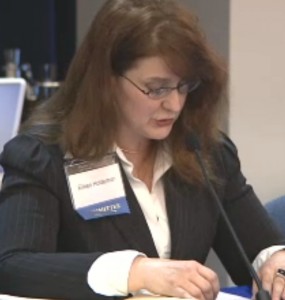
Eileen Holderman: "You called upon us as experts. To hijack our recommendation and pretend like it’s being done, that’s wrong."
Holderman then spoke out and, clearly angry, distressed and at times apparently close to tears, she said she feels “afraid to be on this committee now”. She said she was “afraid to speak out but I’m going to”. She said she felt bullied, and believed the chair was ‘shutting her down and shutting other people out’. “I’m standing up for myself”, she continued. “You called upon us as experts. To hijack our recommendation and pretend like it’s being done, that’s wrong”. She said that the Designated Federal Official (DFO), Nancy Lee, had called her and two other committee members, and intimidated them - some were even calling lawyers.
Mary Ann Fletcher then spoke up to say that she was one of the committee members who was "under threat of eviction from this committee, for expressing my opinion."
Maier joined the fray – again, feeling the need to speak out in public and noting the risk in doing. It has been very difficult for her to serve on this committee, she said. People in her department “laugh at me, tell me I don’t know what I’m doing”; she’s being told that what she’s telling them is wrong. Since February, she said, she has worked “every single frickin’ weekend” on this, and she’s tired of people telling her that she’s wrong.
Krafchik struck a calm and diplomatic note: What Eileen said was disturbing, he said, and he hoped “we can get past that”. He noted that he didn’t intend any affront to Maier when he said earlier that the NIH workshop didn’t correspond to what CFSAC had asked for (Maier said no, she had not taken any affront to what Krafchick had said). Krafchick again stressed CFSAC’s recommendation of an interim case definition, starting with the CCC, because it has been used by IACFS, it has the best vetting we could hope to see, and it should be put in place while all the other activities happen, and then revisited. Many researchers are using CCC, he noted. Levine spoke up to say: yes, most researchers are already using it. So if that’s the case, Krafchick asked, what’s the harm in the NIH adopting it now?
Marshall asked everyone to take a "collective deep breath', and move on to finishing the committee’s work, and with that, the brief but intense fracas was over.
Workgroups
The committee moved on to discussing the assignation of workgroups to the committee members: each one should consist of 3-7 people, Marshall said, and the goal was to get them up and working in the next few weeks. There were two workgroups to be formed:
Fletcher asked whether the rationale for the workgroups was because the committee now has to give an extended detailed plan of how to achieve its recommendations? Nancy Lee said that a ‘background rationale’ was needed for recommendations, not a detailed plan. There would probably typically be a few pages for each recommendation: just the recommendation and a rationale. Marshall said that the workgroups can be expansive or succinct, as appropriate to provide the necessary information.
- Investigate strategies to increase the numbers of researchers funded for ME/CFS research. Dimitrakoff and Cook have been asked to chair.
- How to increase the numbers of clinicians giving the highest caliber of expert health care. Sue Levine will be chairing that.
Fletcher was still frustrated with the requirement for the rationale. Is someone actually going to read them, she wondered? Without that rationale, answered Marshall, they simply won’t have the same weight - as Wanda had said yesterday, and she got that ‘from the lips of the Secretary himself’. He clarified that the workgroups would include phone calls as well as possible external involvement of groups and representatives from outside the CFSAC committee members.
Ken Friedman noted that ten years ago when he was a committee member, the committee had put forward a proposed new strategy for funding. This committee seems not to be recommending any change to the way ME/CFS is funded, so far. He wondered whether the possibility of alternative strategies is being dismissed. He suggested a clarification to the wording for the brief of the second workgroup: more specialists are needed, but more primary care physician knowledge as well – and nurses too.
Kim McCleary queried the word ‘expert’ in the second workgroup’s brief, since this could be taken to imply the workgroup was focused on encouraging specialism in care and the brief intended was broader than that.
A fairly long discussion followed about the whole concept of workgroups. Marshall and Lee both talked about this for some time, and Friedberg asked that the workgroup suggest ways to disseminate the primer – and mentioned that a revision is currently under way, and Ken Friedman is involved in that; the revision would elaborate on the treatment approach for more severely ill patients and would be available for the next meeting.
Education and Quality of Life sub-committee report
With just seven minutes left, Marshall allowed Eileen Holderman to present her report on her sub-committee’s activities. Holderman did not appear happy that this was enough time, and tried to dash through an overview of what the sub-committee (the Education and Quality of Life sub-committee) had been doing. Leonard Jason and many others had attended discussions with the group, and they had discussed topics such as the ICD-10, the prioritized recommendations, they had looked at the primer, the innovation centers concept, the case definition, and the needs of seriously ill patients. Friedman had presented to the group on medical school scholarships, they had looked at provider education, mostly focused on the private centers that were ‘popping up all over’. Dr Enlander had also attended. Concluding, Holderman said that the sub-committee had been a very positive experience and she hoped it would continue.
KimMcCleary jumped in quickly to note, just before the close, that the committee should express its thanks and its support, somehow, for the FDA’s workshop, and its hopes for taking the process forward.
And with that, Gailen Marshall brought to a close what had been an eventful CFSAC meeting – albeit one which many will feel had achieved little or nothing in the way of real progress – and repeated that anyone wishing to contact him should do so (as Nancy had earlier stressed when Marshall mentioned at the beginning of the first day that his own email address was ‘widely available’) via CFSAC@hhs.gov - cheekily adding “wink, wink, wink”.
Phoenix Rising is a registered 501 c.(3) non profit. We support ME/CFS and NEID patients through rigorous reporting, reliable information, effective advocacy and the provision of online services which empower patients and help them to cope with their isolation.
There are many ways you can help Phoenix Rising to continue its work. You can even donate significant sums, at no cost to yourself, as you shop online! To find out more, visit Phoenix Rising’s Donate page by clicking the button below.
View the Post on the Blog

